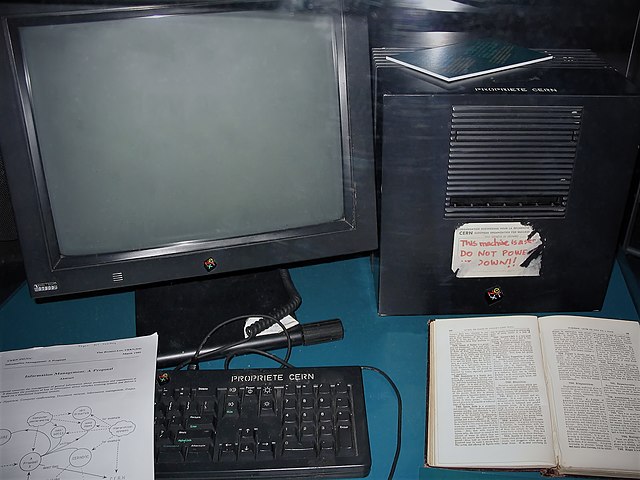NeXT Computer is a workstation computer that was developed, marketed, and sold by NeXT Inc. It was introduced in October 1988 as the company's first and flagship product, at a price of US$6,500, aimed at the higher-education market. It was designed around the Motorola 68030 CPU and 68882 floating-point coprocessor, with a clock speed of 25 MHz. Its NeXTSTEP operating system is based on the Mach microkernel and BSD-derived Unix, with a proprietary GUI using a Display PostScript-based back end. According to the Science Museum Group, "The enclosure consists of a 1-foot die-cast magnesium cube-shaped black case, which led to the machine being informally referred to as 'The Cube.'"
This NeXTcube was used by Tim Berners-Lee as the first server on the World Wide Web.
NeXT, Inc. was an American technology company headquartered in Redwood City, California that specialized in computer workstations for higher education and business markets, and later developed web software. It was founded in 1985 by CEO Steve Jobs, the Apple Computer co-founder who had been forcibly removed from Apple that year. NeXT debuted with the NeXT Computer in 1988, and released the NeXTcube and smaller NeXTstation in 1990. The series had relatively limited sales, with only about 50,000 total units shipped. Nevertheless, the object-oriented programming and graphical user interface were highly influential trendsetters of computer innovation.
Redwood City headquarters at 900 Chesapeake Drive, July 2022
Steve Jobs, here pictured in 1984, founded NeXT in 1985.
This NeXT Computer was used by computer scientist Sir Tim Berners-Lee at the European Organization for Nuclear Research (CERN) to create the world's first web server and web browser, which is also a web page editor.
A NeXTcube has a NeXT monitor.




